I have an Integrand which reads
static double Integrand(double k , void * params)
{
long double *p = (long double *)params;
long double MassSquared = p[0];
long double Temp = p[1];
long double sign = p[2];
long double EXP = std::exp(-std::sqrt(k*k+MassSquared/(Temp*Temp)));
double res = 0;
if(sign == -1)
{
res = k*k*std::log(1-exp(-std::sqrt(k*k+MassSquared/(Temp*Temp))));
}
else if(sign == +1)
{
res = k*k*std::log(1+exp(-std::sqrt(k*k+MassSquared/(Temp*Temp))));
}
return res;
};
This one is in a Class called VEffClass.
My Integration Routine would then be
long double VEffClass::NumIntInf(long double low, double sign, long double
MassSquared, long double Temp)
{
//long double res = 0;
double up =
std::sqrt(std::log(C_threshold)*std::log(C_threshold)- MassSquared/(Temp*Temp));
long double StepSize = (up-low)/C_IntSteps;
long double par[3] = {MassSquared, Temp, sign};
if(Temp == 0) return 0;
gsl_integration_workspace *w = gsl_integration_workspace_alloc(5e+5);
double result, error;
gsl_function F;
F.function = &VEffClass::Integrand;
F.params = ∥
gsl_integration_qags(&F, C_threshold, up, 1e-07, 0, 5e+5, w, &result,
&error);
gsl_integration_workspace_free(w);
return result;
}
with C_threshold = 1e-3;
If I run NumIntInf(10^-3, +1 , 100, 500) the result is 1.83038. The Result given by Maple is ~ 6*10^9 . If I use a simple Simpsons 1/3 Method it differes about 1% from the Maple result.
Can anyone point me to the Error?
Thanks for any suggestions
